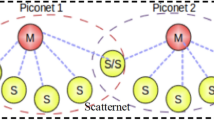Abstract
The traditional intrusion detection technology has some shortcomings, such as high hardware requirements and harsh detection conditions etc. This paper proposes an environment intrusion detection technology based on WiFi, which uses the existing WiFi network to realize security monitoring function, covers a wide range and does not expose privacy. Firstly, the technology uses median filtering to denoise the subcarriers in the channel, and then using the self-organizing competitive neural network algorithm for fingerprint feature extraction and establish the intrusion signal. Finally, the statistical model of the nonlinear dependence between the intrusion and the fingerprint database is obtained by using the classification of normalized exponential function, to achieve the purpose of intrusion detection. The experimental results show that the recognition rate of this technology is improved by nearly 8% compared with the existing methods, reaching 98%, which has a good development prospect.









Similar content being viewed by others
References
Oyedotun, O. K., & Khashman, A. (2017). Deep learning in vision-based static hand gesture recognition. Neural Computing and Applications, 28(12), 3941–3951.
Voulodimos, A., Doulamis, N., Doulamis, A., & Protopapadakis, E. (2018). Deep learning for computer vision: A brief review. Computational intelligence and neuroscience.
Otoum, S., Kantarci, B., & Mouftah, H. T. (2019). On the feasibility of deep learning in sensor network intrusion detection. IEEE Networking Letters, 1(2), 68–71.
Ma, T., Wang, F., Cheng, J., Yu, Y., & Chen, X. (2016). A hybrid spectral clustering and deep neural network ensemble algorithm for intrusion detection in sensor networks. Sensors, 16(10), 1701.
Zhang, R., Chen, Y. R., Chen, H., Liu, B. T., & Zhou, J. H. (2019). Off line recognition algorithm of user motion state based on breath sound. Sensors and Microsystems, 12, 30.
Zeng, Z., Zhang, L., Chen, J. C., Huang, M., & Yang, J. J. (2019). Mechanism and experimental study of Intrusion Detection Based on WiFi signal. Application of Electronic Technology, 3, 92–95.
Zhou, Q., Xing, J. C., & Yang, Q. (2018). Human intrusion detection method based on phase difference of channel state information. Journal of Sensing Technology, 1, 103–109.
Chen, J. H., Liu, K. Z., Chen, M. Z., Ma, J., & Wang, X. Q. (2018). Intrusion detection method for ship sensitive area based on channel state information. Journal of Dalian Maritime University, 45(1), 89–95.
Wang, J., Zhang, L., Gao, Q., Pan, M., & Wang, H. (2018). Device-free wireless sensing in complex scenarios using spatial structural information. IEEE Transactions on Wireless Communications, 17(4), 2432–2442.
Abdullah, E., Idris, A., & Saparon, A. (2017). Papr reduction using scs-slm technique in stfbc mimo-ofdm. ARPN Journal of Engineering and Applied Science, 12(10), 3218–3221.
Albayrak, C., Turk, K., Tugcu, E., & Yazgan, A. (2020). Seamless rate adaptation for indoor visible light communication without CSI at the transmitter. Physical Communication, p 101071.
Jiabao, J., Yunfu, S., Shan, O., JunJie, P., & Xianchao, W. (2020). The application of SJ-MSD adder to mean value filtering processing. Optik, 206, 164271.
Zhou, D. X. (2020). Theory of deep convolutional neural networks: Downsampling. Neural Networks, 124, 319–327.
Mici, L., Parisi, G. I., & Wermter, S. (2018). A self-organizing neural network architecture for learning human-object interactions. Neurocomputing, 307, 14–24.
Boucher, A., & Badri, M. (2017, July). Predicting fault-prone classes in object-oriented software: an adaptation of an unsupervised hybrid SOM algorithm. In 2017 IEEE International Conference on Software Quality, Reliability and Security (QRS) (pp. 306–317). IEEE.
Zhang, C., Liu, X., & Biś, D. (2019, July). An Analysis on the Learning Rules of the Skip-Gram Model. In 2019 International Joint Conference on Neural Networks (IJCNN) (pp. 1–8). IEEE.
Wang, F., Cheng, J., Liu, W., & Liu, H. (2018). Additive margin softmax for face verification. IEEE Signal Processing Letters, 25(7), 926–930.
Author information
Authors and Affiliations
Corresponding author
Additional information
Publisher's Note
Springer Nature remains neutral with regard to jurisdictional claims in published maps and institutional affiliations.
Rights and permissions
About this article
Cite this article
Zhu, X., Xu, H., Zhao, Z. et al. An Environmental Intrusion Detection Technology Based on WiFi. Wireless Pers Commun 119, 1425–1436 (2021). https://doi.org/10.1007/s11277-021-08288-4
Accepted:
Published:
Issue Date:
DOI: https://doi.org/10.1007/s11277-021-08288-4




